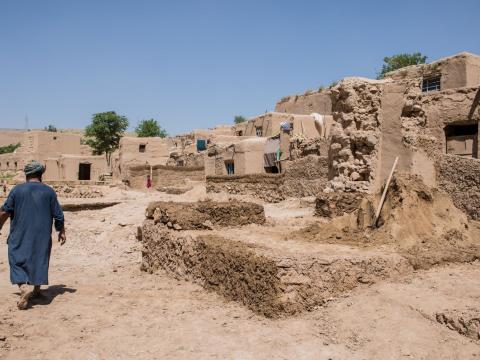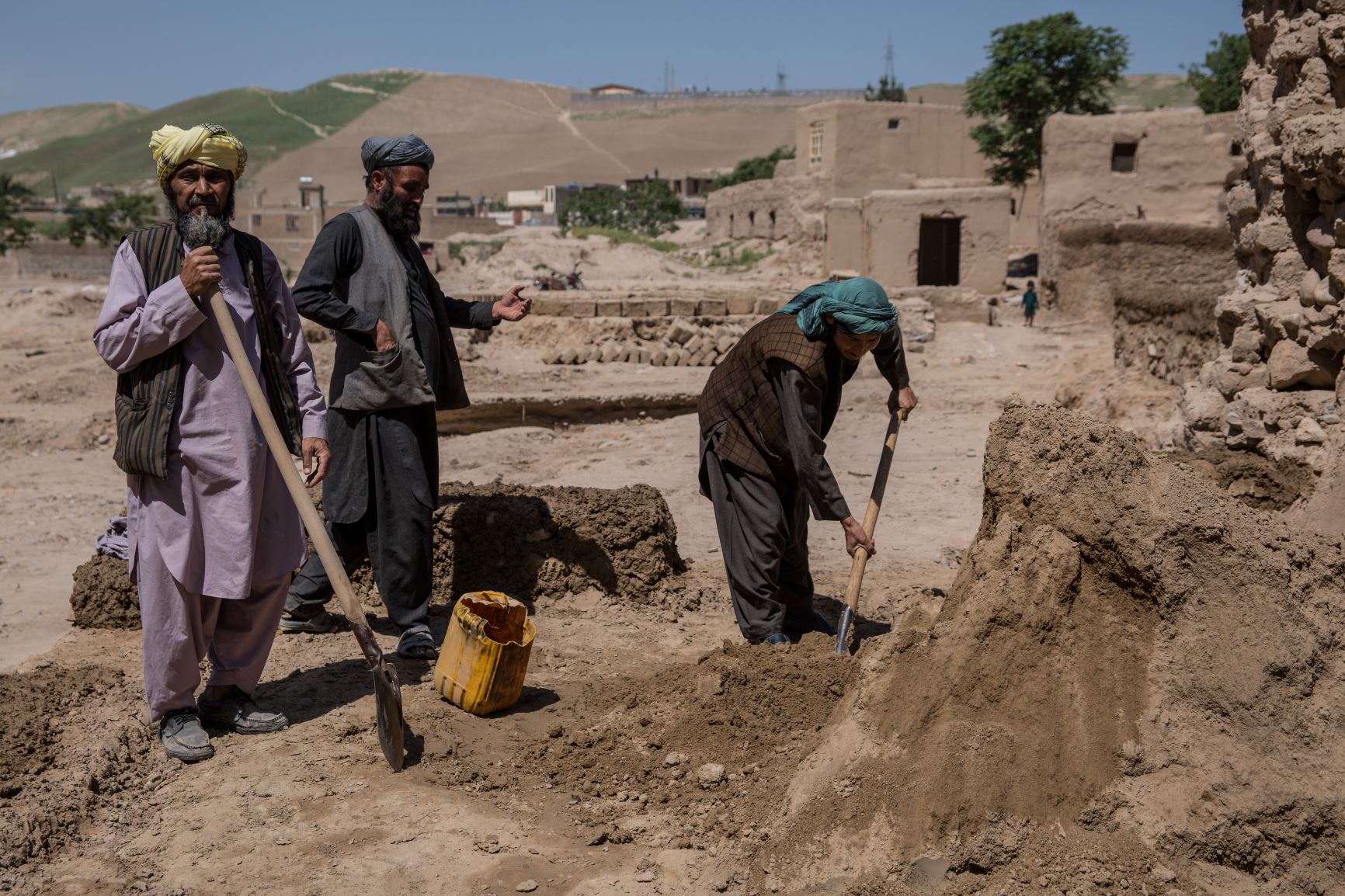“We have no other place to go.” Flood victims survive in the ruins of their houses.

In her red dress and her brown curly hair, two-year-old Gul Zar sits surrounded by the ruins of her house. Dried mud lies tossed across the backyard and debris is caught in the branches of a nearby tree. The red dress is all that Gul Zar has left - most of her family’s belongings have been swept away. The little girl is quiet and composed, though her home looks nothing like it used to. Muddy carpets, car tires, tarpaulins and bricks have been tossed together. Everything is broken.
Heavy flash floods have hit tens of thousands of people overnight in early April in Afghanistan’s Badghis in what people have described as the worst storm in decades.
With many families just recovering from the drought, the floods have brought a new disaster, especially for those who were previously displaced.
“We’ve lost everything and our house is destroyed, but we have no other place to go,” says Gul Zar’s mother Zainab, who just turned 18, but was married off at age 14. She’s already a mother of three and has been living in a simple mud house next to Badghis’ river. The water has left little standing.
“We’re afraid,” Zainab says. “The water started rising in the evening and the floods hit at night. There was no light and we could barely see. We were scrambling uphill towards the road. I wasn’t sure if I’d be able to save my children.” She sits with her youngest daughter in her arms, her face covered by a black scarf.
Several people were killed in the aftermath of the floods. For Zainab and her family, the next months will be busy rebuilding their house. One small building has been left standing and the family has moved into it; hoping to keep their newborn Fatima safe, who was just two months when the floods hit.

Zainab’s family lives right next to the riverbed, in a carved out canyon. The water had always been used for bathing and cleaning until it became dangerous.
“I still dream about the night when the floods came. I was so lost. I could hear the water rising. I will never forget it.”
The water came and went quickly. Within two hours, the floods had passed, engulfing hundreds of households in water. “The water was up to the branches,” Zainab says, pointing to a tree that still has pieces of cloth high up in its leaves. The surrounding area is equally devastated. Houses have literally been melted to the ground by the water. Others stand in ruins. Outside near the river, men are busy making new bricks out of water and mud. The finished ones lie drying in the sun, ready to be used for new houses.
With most people unable to access food or drinking water, World Vision was able to supply water purifying tablets and distribute food. The organisation continues to assess the area, hoping to build further wells and ensure that flood victims have enough drinking water available.
“It has helped us,” says Zainab. “But the need here is big.”
The family shares a compound with other relatives, most of who work as daily labourers in Badghis’ provincial capital Qala-e-Naw. “Since the floods, my husband has been busy rebuilding out a house, so he hasn’t been able to make money,” says 56-year-old Zahrab. She admits that it’s been especially traumatic for her children. “They keep asking if the water will come back. I tell them it won’t, but - honestly - I don’t know the answer. And I am scared.”
Photo and the text: Stefani Glinski